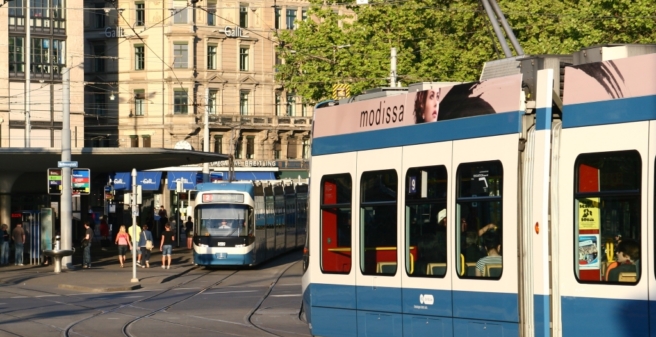
Zurich’s tram and bus network has reached its capacity at various junctions. The predicted densification of the city, which assumes a population growth of 100,000 inhabitants and 40,000 new jobs by 2040, increases the need for action. Added to this is the city’s net-zero target by 2040, which will require an increased shift from motorised private transport to efficient and electrified public transport.
This was most recently taken into account with the 2030 network development strategy. This has resulted in the extension of line 2, the Hardbrücke tram connection and the extension of lines 70, 184 and 185 to Wollishofen railway station. The Affoltern tram is also in the project status.
The Network Development Strategy 2040 (NES 2040) now defines the public transport services and infrastructure requirements needed to meet these challenges. In a broad-based process, experts from VBZ, the Civil Engineering Office, the Office for Urban Development and the Zurich Transport Association (ZVV) have worked intensively on traffic and development forecasts, identified mobility needs and orientated themselves on urban and cantonal planning. The work is based on the findings of the Public Transport 2050 vision presented in 2021. Important input came from the population, who were able to contribute their wishes and concerns as part of a participatory process.
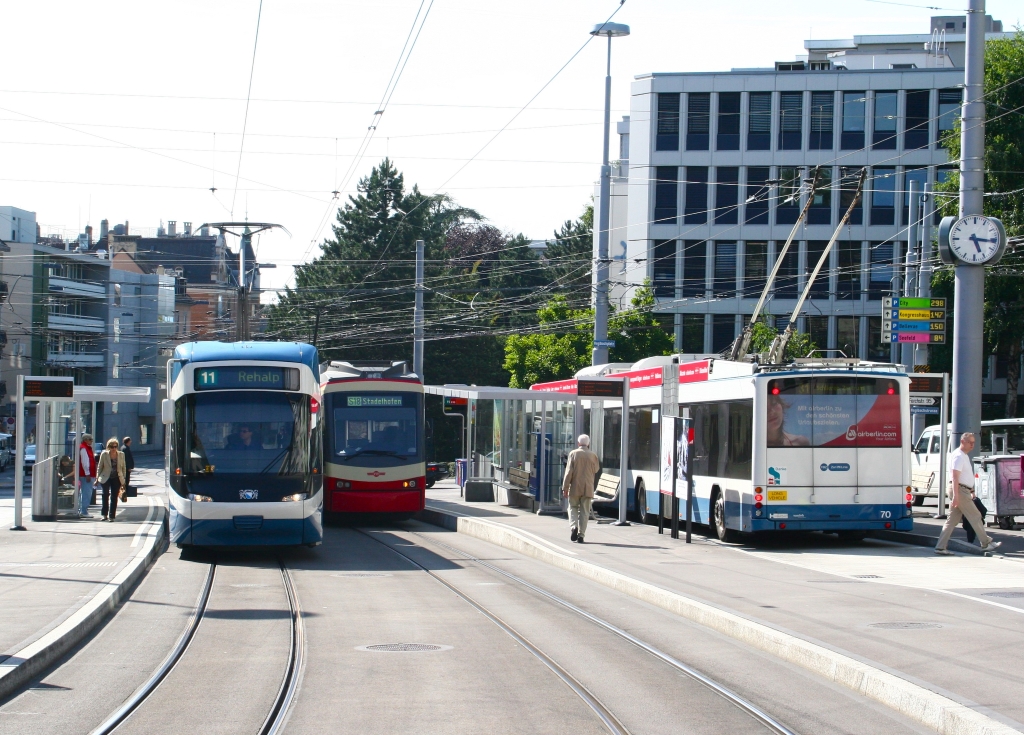
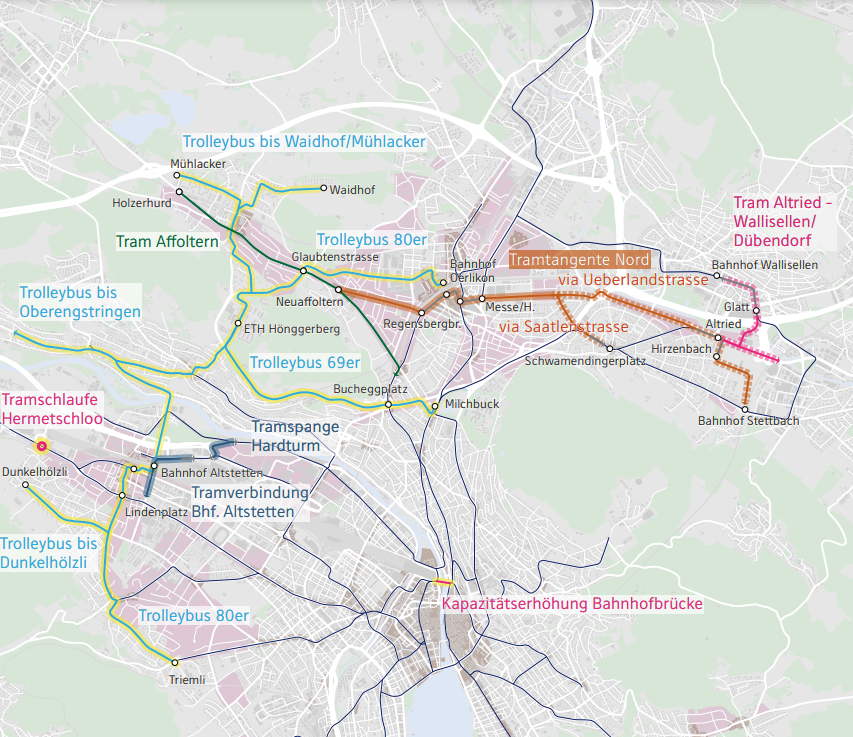
Stage 1: Optimisation in the north and west
The network expansions will be realised in stages. In the first stage, the focus is on the Affoltern tram, which was already part of the 2030 network development strategy. In addition, there is the northern tram tangent, which, according to VBZ Director Marco Lüthi, “gives urban development a boost and supports polycentricity in Oerlikon”. In addition, the tram extension from Altried to Wallisellen or Dübendorf will improve the connection between the city and the agglomeration.
In Zurich West, in addition to the Hardturm tram link, the Altstetten station tram connection at the Europabrücke bridge provides further access to Altstetten station. This “centrepiece” of the outer ring strengthens the urban network via the track field and connects districts 5 and 9. Further infrastructure measures will optimise the bus and tram network. These include the previously announced adjustments to the southern tram network, which are due to come into force from the 2026 timetable, optimisations to the Altstetten bus network, the extension of bus route 32 to Hönggerberg, the extension of route 72 to Adliswil, the electrification of routes 69 and 80 and the extension of route 6 to Altstetten.
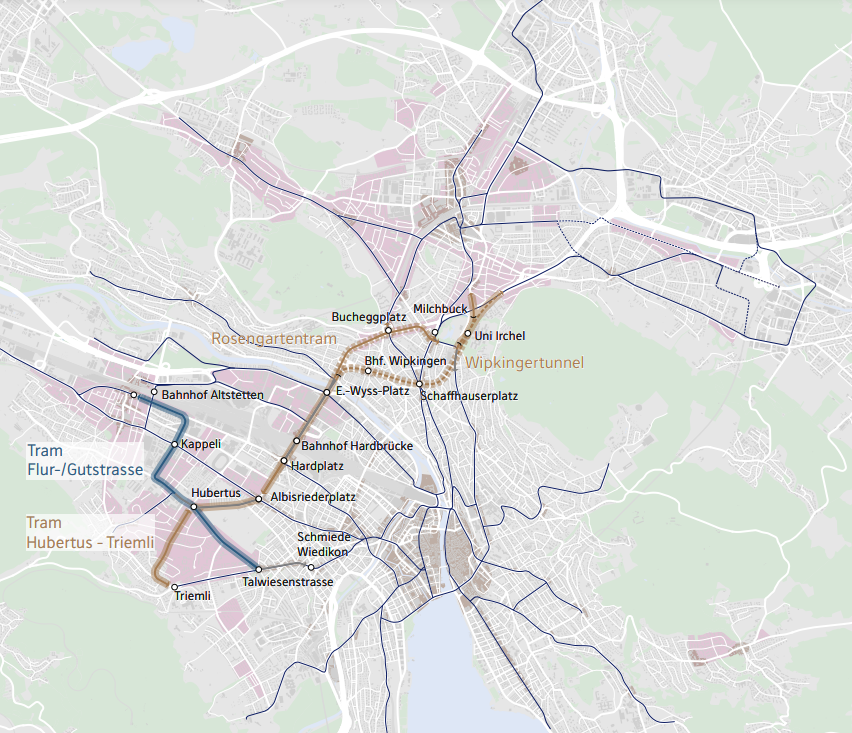
Stage 2: The inner ring
From 2040, the focus will be on the inner ring road. In order to relieve pressure on the city centre and achieve a high degree of flexibility for future line network design, additional capacity and direct connections from the Zurich West development focus to the northern city districts are planned between Albisriederplatz and Milchbuck/Irchel. To this end, a new tramway connection is to run via Hardbrücke and then either via Rosengartenstrasse or with a tunnel via Wipkingen station and Schaffhauserplatz to Irchel. This will close an important gap in the network. The Civil Engineering Office has already begun the necessary clarifications for the final choice of options.
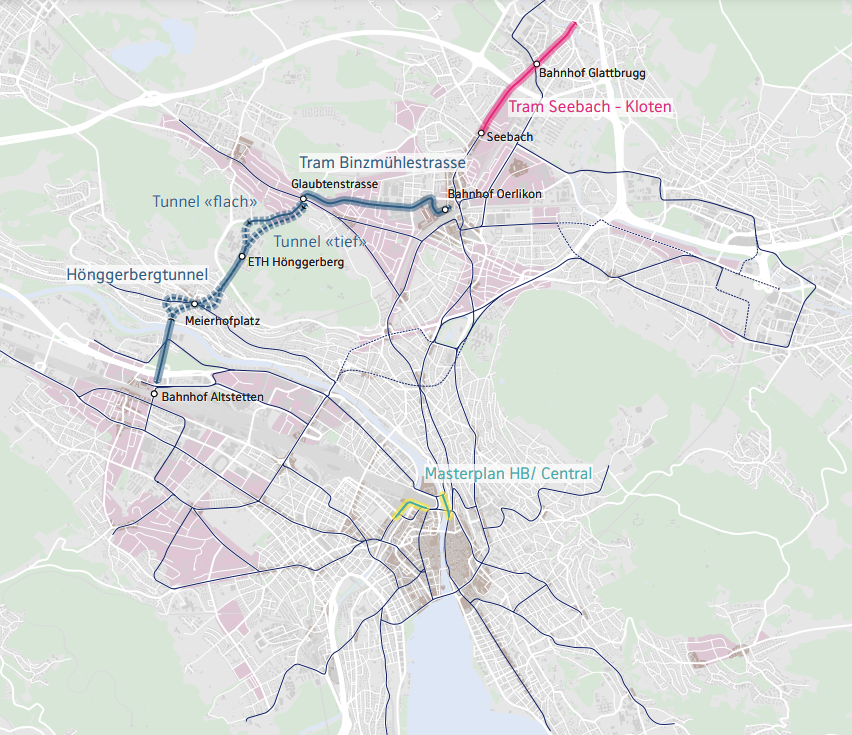
Stage 3: The ring system
In the 2050s, the aim is to close the outer ring with the Hönggerberg tunnel and a continuation towards Oerlikon. There are also two variants for this tunnel. In Zurich North, a tram extension from Seebach to Kloten is also planned. Another focus of this third stage is the HB/Central area. Its further development will be based on the masterplan of the same name, which should be available from 2025.
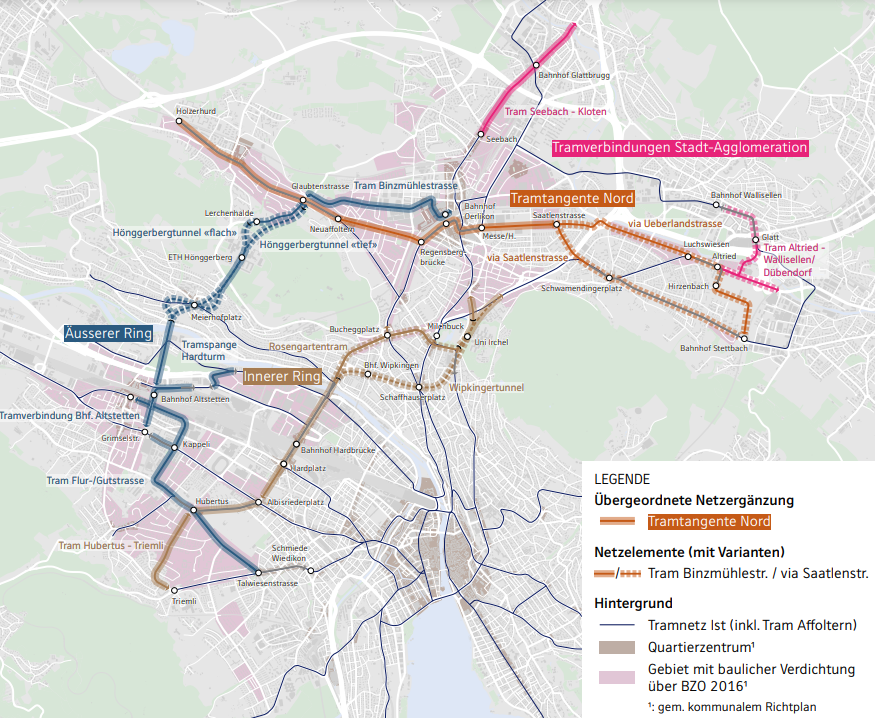
Investments of 1.9 to 2.5 billion Swiss francs
The costs for the tram infrastructure for the three stages are estimated at CHF 1.9 to 2.5 billion. This cost estimate is based on empirical values from realised and ongoing projects. The cost estimates do not include the measures from the last network development strategy, which was drawn up in 2013. This concerns the Affoltern tram, the realisation of which is planned by 2030. Operating and follow-up costs for new tram and bus locations are also not included.
The cost estimate for stage 1 is CHF 420 to 580 million. This includes the northern tram tangent, the Altried-Wallisellen/Dübendorf tram, the Altstetten railway station tram connection and the Hardturm tram link. The costs for the network elements to be realised in stages 2 and 3 are estimated at CHF 1.4 to 1.8 billion. The costs will be borne by the canton, the city and the federal government, which is contributing to such projects through its agglomeration programme.
Expansion of depot capacities
The expansion of services, the electrification of the bus fleet and the emerging need for more vehicles are accompanied by the need for additional parking space and maintenance infrastructure. For example, the site on Aargauerstrasse, which has been secured by the urban development plan, is being developed together with the site of the central workshop in Altstetten for the parking and maintenance of tram vehicles. Tram extensions and extensions to the Glattalbahn railway require additional parking areas in the north. In addition, new garage locations are being sought in the Pfannenstiel, upper Glattal and Limmattal regions for the electrification and expansion of the bus fleets. These are necessary in order to implement the ZVV’s decarbonisation strategy on time and gradually expand the bus service.
Increase in operating costs
The gradual expansion of public transport services will increase operating costs. At the same time, the public transport network will become more attractive thanks to expansions, more frequent services and new direct connections. Income will increase accordingly. According to the modelling, the cost recovery ratio will remain the same at around 80 percent.
The final decision
The City Council has approved the 2040 network development strategy and instructed VBZ to implement it together with the departments involved.
(Info: VBZ)
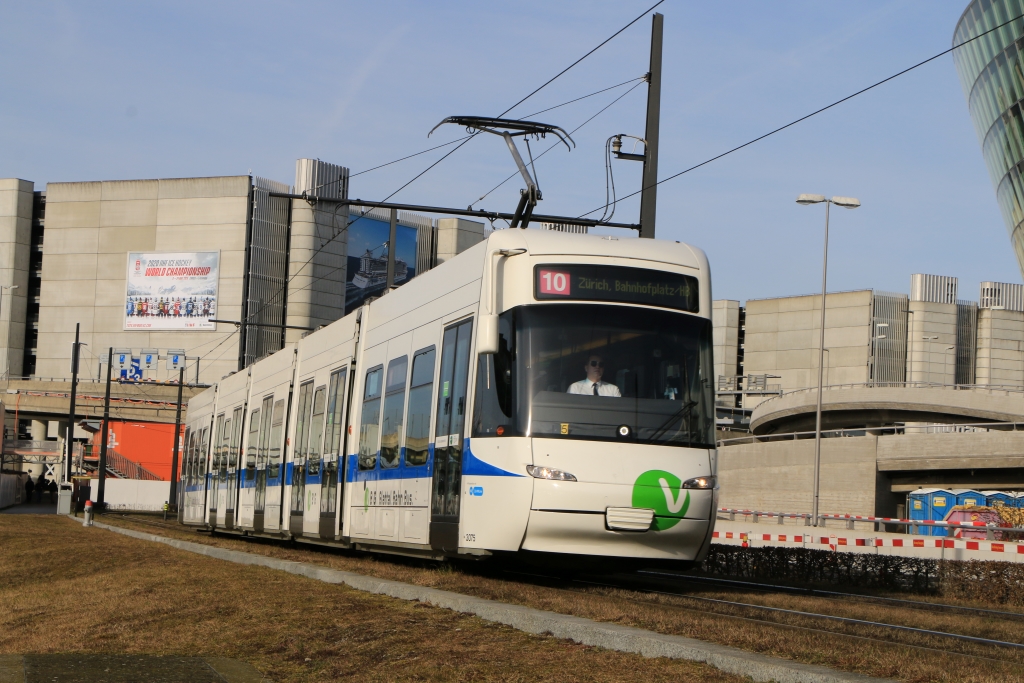


Zurich needs a subway. The tram network though very good has reached its limits. Trams are too slow for crossing the city and their capacity is limited due to the speed and traffic they need to wait for. Com’on Zurich, you can do it.
As a native of Zurich who has worked in the public transport sector for over 35 years, I recommend building a real metro for the final stage of this project. I know that in Zurich most public transport staff are afraid to return to this topic just because there was a referendum on an underground train over 50 (!!) years ago (1971) and people were against it. But please bear in mind that it was a time when the private car was — most people think —
the best vehicle for transport. It is time to move on.